Equine therapy for ISIS survivors in Iraq
© Claire Thomas (photos and text)On the outskirts of a small, dusty village in the Kurdistan region of Iraq, a small herd of horses are helping survivors of captivity, torture, and genocide.
Almost a decade since the so-called Islamic State committed a genocide against Iraq’s Yazidi population - a Kurdish-speaking ethnic and religious minority - thousands of Yazidis remain in crowded displacement camps with little hope of returning to their homeland of Sinjar in northern Iraq.
The ‘Horses for Hope’ project has recently started offering equine-assisted therapy to Yazidi men, women and children who are survivors of ISIS captivity, as well as other minorities in Iraq who have been affected by conflict and displacement. Established by a British woman and inspired by an American cowboy, the project is a part of the Springs of Hope Foundation, a US registered non-profit organization.
The equine program is managed and operated by young Yazidi men who are themselves survivors of ISIS captivity after being forced to join the terror group’s ranks as child soldiers. The horse project is also supported by American cowboys from Texas and other US states, some of whom have travelled to Iraq to train both the horses and staff.
click to view the complete set of images in the archive

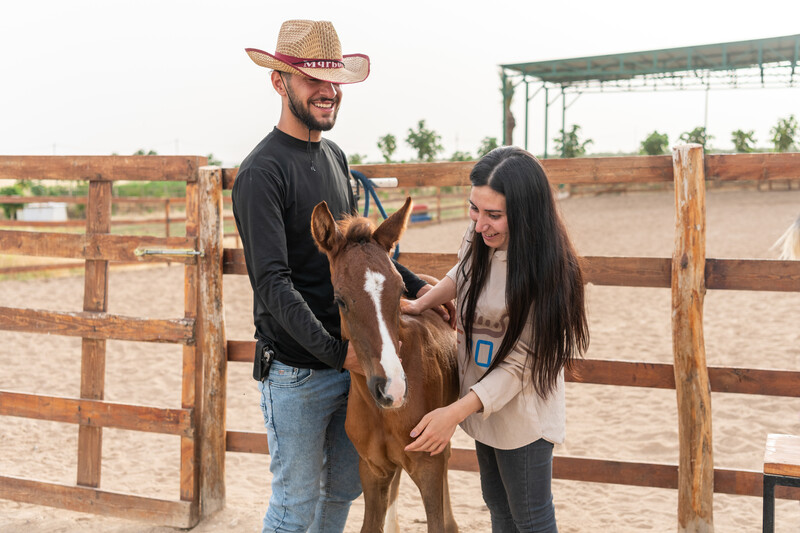
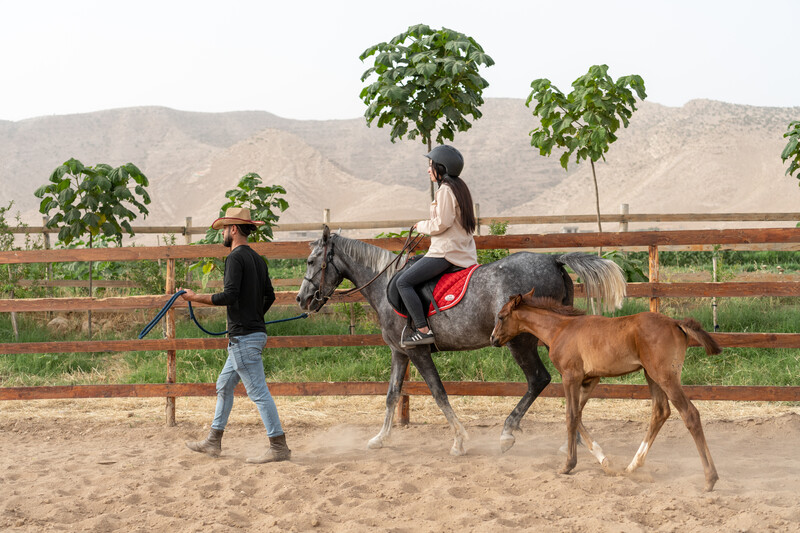


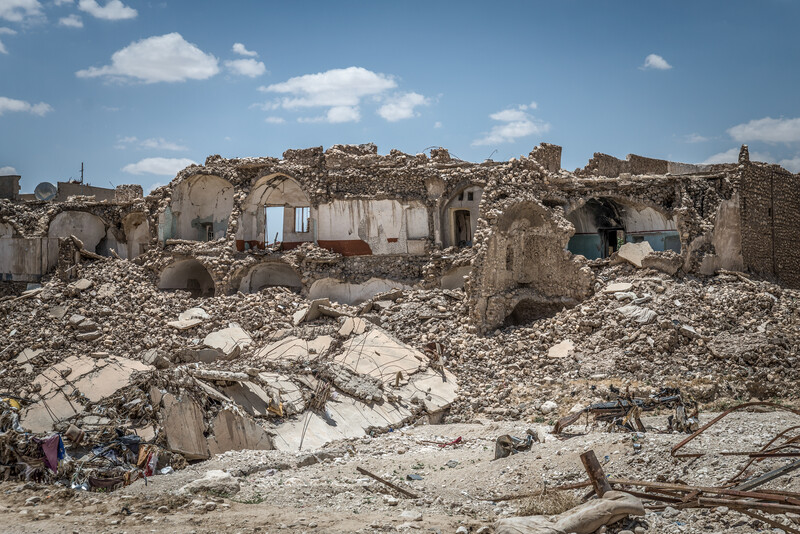
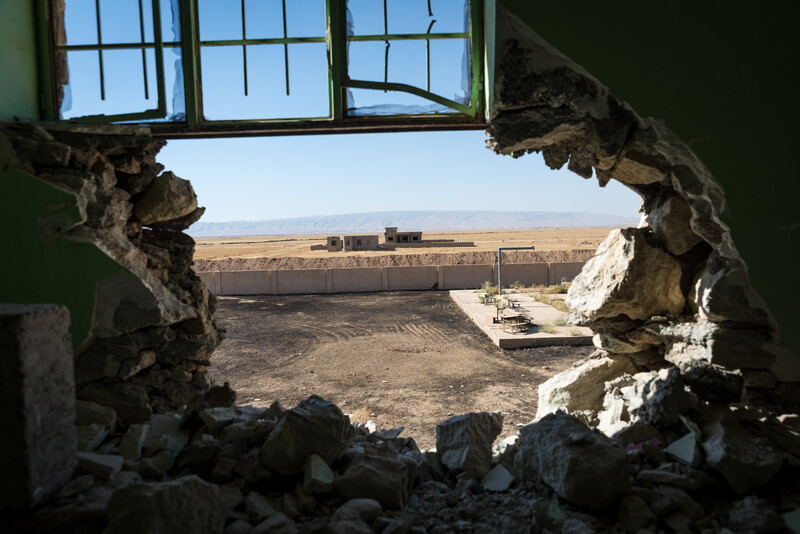


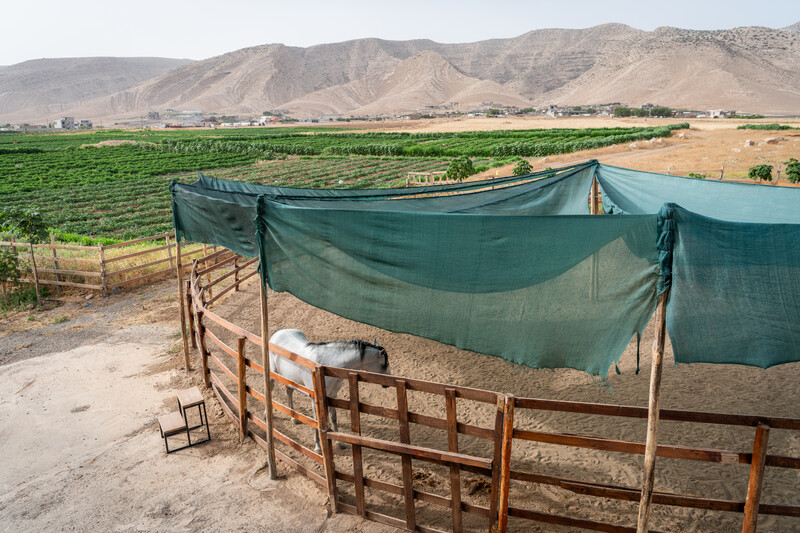

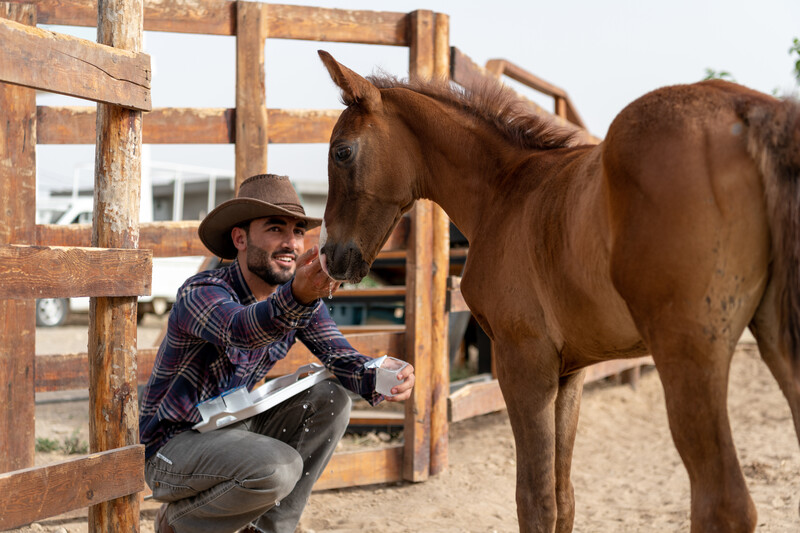

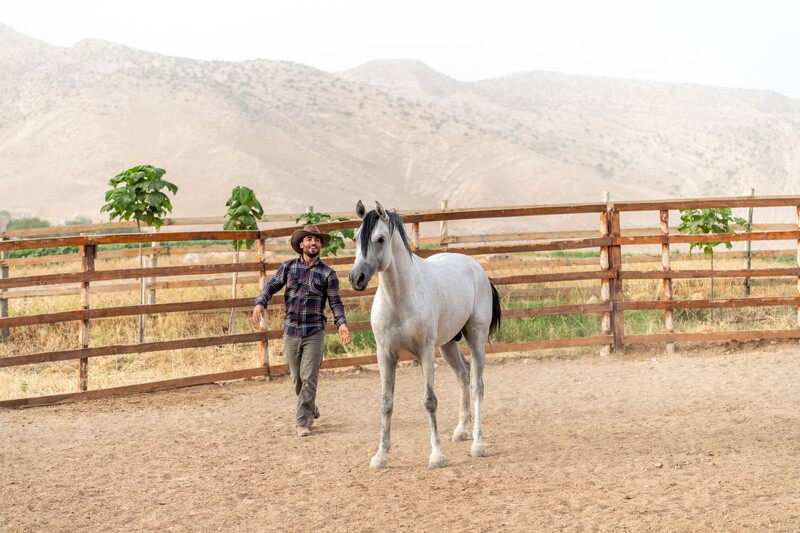

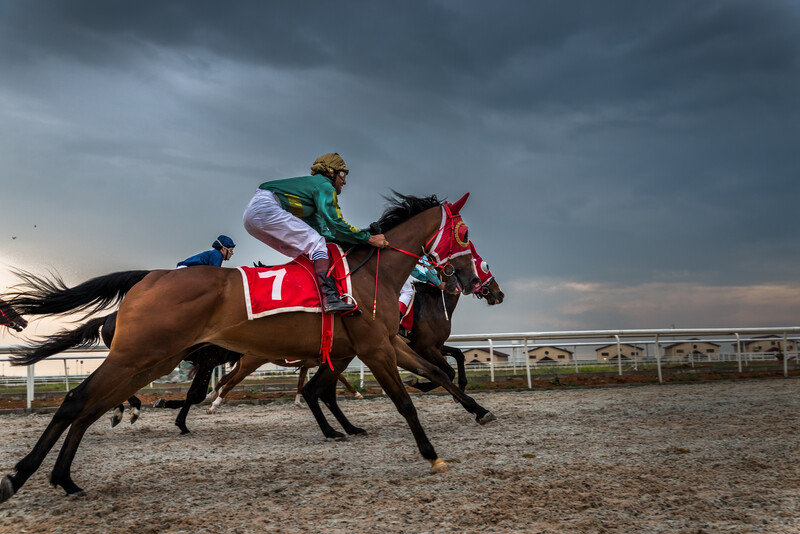

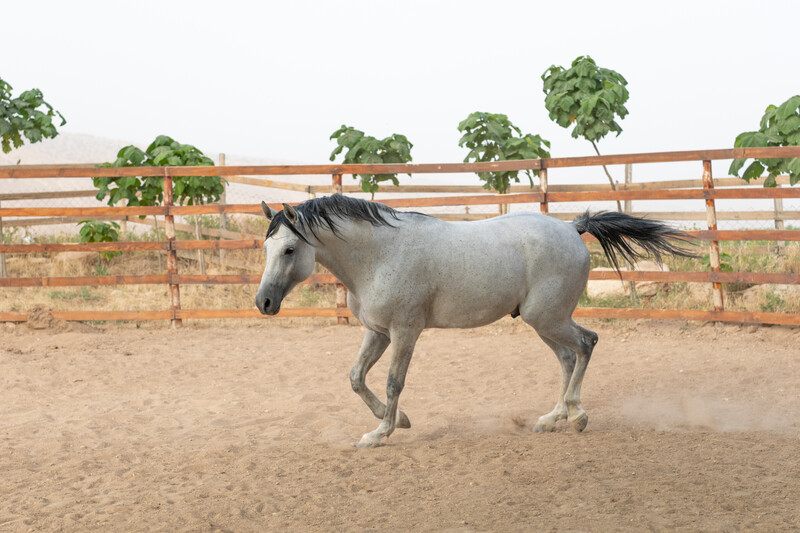


Hadia’s face lit up as she stood beside the feisty chestnut-colored foal, one hand on his back and the other softly petting his neck. Twenty-two-year-old Barzan gently held Sapphire, the young horse he’s nurtured a trusting bond with. Hadia and Barzan are both Yazidi, a Kurdish-speaking ethnic and religious minority in Iraq. They are also survivors of captivity by the so-called Islamic State.
I’d met twenty-five-year-old Hadia a few days earlier at a camp for internally displaced people in the Kurdistan Region of Iraq. Originally from the Sinjar District of northern Iraq, she has lived in the camp since 2019 when she escaped from Syria after being held captive by ISIS for several years.
We connected instantly, both feeling as if we’d known each other for a long time. As we exchanged WhatsApp numbers, Hadia smiled and rushed to type something into Google Translate. “I go to Shariya”, read the words on her phone screen. “I’m sorry, I don’t know what that means,” I replied, unaware that Shariya is the name of a nearby Yazidi village and refugee camp. She pointed to my WhatsApp profile photo of me on a horse. Still not fully understanding, but with my interest noticeably piqued at the suggestion of something potentially horse related, Hadia showed me an Instagram account with pictures of beautiful horses, smiling faces, and an inexplicably friendly squirrel.
The Instagram account belongs to an organization called the Springs of Hope Foundation, which is based at the Shariya camp for internally displaced people in the Duhok governorate of the Kurdistan region of Iraq. The organisation has several programmes that provide support, education and healing to Yazidis, and other minorities who have been affected by conflict and displacement.
I was fascinated to learn from Hadia that they also have a recently established horse programme called ‘Horses for Hope’, which offers equine-assisted learning and psychological therapy to survivors of ISIS captivity, as well as orphans, youths at risk, and those affected by war.
With a shy smile, Hadia told me that she has been to the equine center, and seemed surprised that I didn’t already know about it. I’m always moved to see how even the mention of horses can bring a smile to people’s faces, as it did to Hadia’s. I asked her if we could visit the center together, and a few days later we were headed to Shariya.
The village of Shariya is home to a refugee camp that accommodates approximately 18,000 Yazidis who were displaced from their homes in the Sinjar District of the Nineveh Governorate in northern Iraq when ISIS militants seized control of the region in August 2014. An additional 20,000 displaced Yazidis live in tents haphazardly scattered around the village.
During the 2014 genocide against Iraq’s Yazidi population, an estimated 400,000 Yazidis were forcibly displaced, thousands of women and girls were taken captive, and thousands more killed. Despite the defeat of the Islamic State in Iraq in 2017, the consequences of the genocide continue for the country’s Yazidis and, sadly, the humanitarian crisis persists. Thousands remain in displacement camps dotted across northern Iraq, with limited access to resources, healthcare, and diminishing hope of securing any form of justice or returning to their destroyed homeland.
As we reached Shariya camp and entered the colorful Hope Centre – one of the main initiatives of the Springs of Hope Foundation and an oasis of peace and recovery for the camp’s residents - we were welcomed by Dr. Saeed Khudeida Alo, Springs of Hope Chief Executive Officer, and Sahla Jassm, Director of the Hope Centre. After a brief tour of the center, I asked Dr. Saeed about the horse programme and what kind of impact it’s had on the people who visit. “You want to know how it helps people?” he asked. “Let’s go and see,” he smiled.
A short but bumpy drive outside the parameters of the camp and the dust-filled streets of Shariya village, the equine center appeared amidst rows of vibrant green planted fields, juxtaposed against the brown hues of the rainless summer landscape in the foothills of the nearby mountains. Spacious, secluded, and carefully landscaped, arriving at the stables felt like stepping into a parallel universe; an instantly soothing escape from the harrowing reality of the region’s recent conflict and the ongoing struggle for thousands of displaced people living just a stone’s throw away.
Reminiscent of a scene from an old Western movie, we were greeted by two young men dressed in blue jeans and cowboy hats: Daoud, the Director of Horses for Hope, and Barzan, Senior Trainer. “I would trust these guys more than anybody in the world, unequivocally,” said Lisa, Founder and President of the Springs of Hope Foundation.
Daoud and Barzan were among the thousands of Yazidi children and adolescents who were taken captive by ISIS in 2014. While women and children were enslaved by the terror group, many of the boys were forced to join its ranks and fight, or else be killed. Hadia’s brother Berhat was also with them in Syria but was tragically killed in an explosion. “If he hadn’t gone into that building that day, he could have been here with them today,” she said mournfully. She also knew Barzan and Daoud during her time in captivity.
When Daoud and Barzan had first arrived at the Hope Center a few years ago, there was hesitancy among the staff in letting them in, Lisa tells me. “We knew who they were in Daesh (ISIS in Arabic),” she said. “We knew their position, we knew they’d been alongside Al Baghdadi (leader of ISIS), we knew the orders they’d carried out. And when they came, particularly Barzan, their eyes were so black, it was like looking somewhere indescribable, beyond hell.”
Despite the staff’s reservations, Lisa insisted that the two young men be given the chance to be rehabilitated and attend the Hope Center. “They were babies when they were taken captive,” she said, speaking figuratively. “They must have been around thirteen or fourteen years old.”
While held captive in Syria, Daoud had spent time working with horses. When the Horses for Hope project was established in March 2022, Lisa immediately thought of him and asked if he’d like to be involved. “I wasn’t kind to the horses in Syria,” he’d told her, “but I did what I had to do.” Lisa posed “but you’d be kind to our horses?” to which he replied, “of course.”
Now twenty-two years of age, Daoud is the proud Director of Horses for Hope and an accomplished horseman. “I think the horses have been incredibly healing for them,” said Lisa, referring to Barzan and Daoud. “And I think when they do something, the rest follow, particularly the boys. They look up to them - they’re still seen as their leaders. If there’s an issue, particularly amongst the boys, all of whom were soldiers, it’ll be Daoud who will go in there to weigh in.”
As Daoud showed us around the grounds of the equine center, I was immediately distracted by the sight of a striking grey stallion standing in a round pen with his head held high and his ears pricked. His name is Taj, meaning Crown, and he’s one of the center’s seven horses.
In awe of the horses, the setting and the immaculate stables, many questions swirled in my mind as I tried to take it all in. How and why did the idea of opening an equine center in this remote area come about, I wondered.
“I think ideas come up with me,” Lisa told me, half-jokingly. Having worked with survivors for fifteen years, some of whom she’d taken to a riding stables, Lisa had long had a vision for the healing power of horses and how they can help people overcome psychological and physical trauma.
“I used to have dreams every night of all of these horses gathering and just looking at me and saying ‘so when are you bringing us? We have a mission,’” she told me with a chuckle. “And I kept saying ‘you’re just a dream, what do you want me to do?’”
In 2016, Lisa founded the Springs of Hope Foundation in Iraqi Kurdistan, running a range of programmes including English as a Second Language, sewing, art, play therapy, music, computers and photography, among other courses.
Around two years ago, one of the online English teachers from the USA asked Lisa if she could bring a career person as a guest into the class to speak to the students once a month.
The first guest speaker was Tim, a cowboy from the US state of Texas, who was wearing a cowboy hat, Lisa recalls. “So, the kids came up to me and said, ‘Miss Lisa… horses, horses, horses, horses!’ I said to them, ‘guys, I would love to bring horses, but we have no land, we have no money for land, and we certainly have no money for horses, and we have no experience with horses… it’s in my heart but I can’t see this happening.’”
Horses then began to appear in her dreams again, and the idea was re-ignited. Speaking to Dr Saeed, Lisa asked him to speak to the mayor about a plot of land to build stables for an equine center. However, without money to purchase any land, Dr Saeed saw no merit in making enquiries. “Well, that’s the end of that subject,” she thought. Except the children in the camp kept on pushing for the idea, recounting how as they were held in captivity in Raqqa, Syria, they also sometimes dreamt of horses, in particular a tall white horse.
Returning to Kurdistan from a short visit to the UK, Lisa was met at the Erbil International airport by Dr. Saeed. “Do you want to go see your land,” he’d asked her. Much to her surprise, Dr Saeed informed her that, in an act of tremendous generosity, a resident of the village had donated a plot of land to the Springs of Hope Foundation to build the equine center.
With no background in horses and no experience building stables, Lisa called Tim in Texas to ask for advice. “I’ve got to prove myself now,” she said, recalling how she felt at the time. For the next few months, she walked around the field, sketching the stables, and researching measurements for stalls. However, with no funds for construction, the stables remained little more than an idea and some lines etched in the sand.
After sharing her vision with some friends in the US, donations began to come in, enabling the building to commence.
Once the stables were built, the next step was learning about horses, and finding out where to buy them. “I saw on Instagram a Kurdish guy with the most amazing photos of horses from the Barzan area,” recalled Lisa. “So, I messaged him and asked where I could buy horses like those.” He directed her to contact a man called Karwan who invited her to meet him in Erbil.
A roughly two-to-three-hour drive from Shariya to Erbil, Lisa and Dr. Saeed made their way to the capital of the Kurdistan region of Iraq to meet Karwan. Lisa remembers how she and Dr. Saeed travelled to the address he’d given them: “It’s like Hollywood Bollywood in Erbil with the Erbil racehorse and equestrian center,” she recalls, smiling. At the entrance gate to the luxurious Erbil International Equestrian Club, rifle-bearing security officers asked for their IDs before informing them that “Sheikh Karwan Barzani will arrive in ten minutes.”
Lisa laughs recounting the experience and their surprise to find out that they were about to meet a relative of Nechirvan Barzani, the President of the Kurdistan Region of Iraq.
Upon meeting, Sheikh Karwan asked Lisa where she’s from, recognizing a British accent. “You left your home and your family to come and work with my people?” he asked her. Lisa replied affirmatively. “Then I am obligated,” said the Sheikh, “I will give you horses.”
Sure enough, once the stables were ready and the staff in place to care for the horses, the Sheikh sent two horses, which have since been named Taj (King Untouchable as Lisa referred to him) and Newroz (Persian New Year as celebrated in Kurdistan). Within two months of arriving at the center, they realized that Newroz, a beautiful dappled grey mare, was in foal, and soon after Almas was born.
When Taj, a tall powerful looking and predominantly white horse first arrived at the center, Lisa recalls how the children were ecstatic. “This was the horse we saw in our dreams in Raqqa,” they told her.
While searching for a farrier, Lisa and Dr. Saeed came across a couple of horses grazing in a nearby village that were in extremely bad condition. “The blacksmith who called himself a farrier… he’s very cruel,” she said. “And so I bought his two horses who were so close to death - there was such severe malnutrition - and I said even if we can never do anything with them, because you can see they’ve been abused, we’re going to save their lives.” They named them Amir and Destiny.
The Horses for Hope project has developed into an increasingly popular and effective project, with continued support and guidance from the Texan cowboy Tim, whose appearance had been the initial catalyst of the mission, as well as various other horse trainers who have come over from the US to train both the horses and the staff.
The programme is tailored to meet the needs of the group or individual, and normally begins with feeding the ducks, Lisa tells me. “When the kids come, they don’t go near the horses at first,” she said. “They take care of the horses’ food; they muck out and they still don’t meet the horses because we’re giving them boundaries. We’re saying whatever’s happened to you in your life, we are putting up the boundaries so that you, a twenty-something kid, are not coming opposite a 1000-pound horse.”
After a few sessions learning about the horses and getting to know their body language, the final two lessons are riding. Seeing Hadia get to know Sapphire and ride Newroz that early summer day, it was clear to see what kind of impact the horse programme has.
As Lisa puts it, “it's like watching magic happen.”
